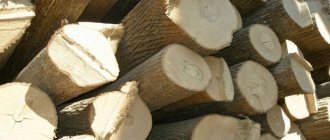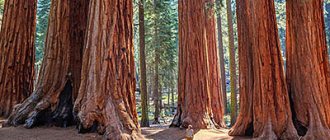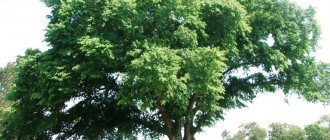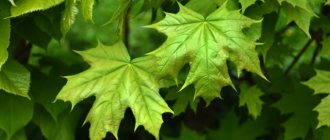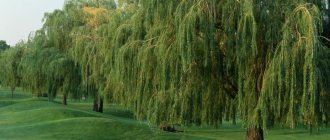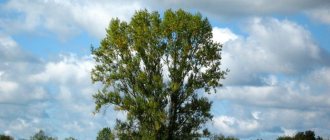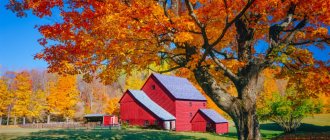Linden is a genus of woody plants, trees or large shrubs belonging to the Linden family. Modern botanists consider the genus as a subfamily in the Malvaceae family. In nature, the linden tree grows in temperate and subtropical zones, in deciduous and mixed forests in North America, Europe, and Asia. When the linden blossoms, the forests are filled with the aroma of honey, and the air is filled with the buzz of bees.
Since ancient times, linden has been valued for its healing properties and used as a powerful medicine. The benefits of linden for human health are so strong that even in the modern world, when the pharmaceutical industry is quite developed, linden is used to treat a wide variety of diseases. In medicine they use: linden buds and flowers, bark, linden honey.
On our website there is a detailed article about the medicinal properties, contraindications and collection of linden blossom.
Description of the plant
Linden trees are large deciduous trees up to 40 meters high. It’s nice to see what a linden tree looks like: a dense, beautiful, dense crown that can be easily molded, pleasing to the eye. Linden leaves are simple, alternate, heart-shaped, with notches along the edge, and pointed. In addition to the beautiful crown, linden has fragrant flowers, lemon-colored, collected in corymbose inflorescences.
Linden blooms for two weeks in July. The tree blooms in natural conditions at the 20th year of life, and in plantations - only after 30 years. During the time of linden blossom, the air is filled with a light, delicate honey aroma, which is felt far beyond the linden gardens and parks.
Linden fruits are single-seeded nuts. The seeds are tiny, the size of a pea. The fruits and nuts are collected several at a time on separate stems. Each such stem is equipped with a special wing, thin and quite wide. This wing helps the seeds disperse over long distances. It is easy to remember what a linden tree looks like; it can always be distinguished from other trees. In summer, along the heart-shaped leaves, in early spring, along the crimson young branches with buds, silky bark. The root system of trees is strong and deep.
Plants can reach a considerable age, but to the question: “How many years does a linden tree live?” there is no clear answer. There are linden trees that are up to 800 and even 1000 years old. In the forests where linden grows, other plants also thrive, since the falling leaves of lindens provide nutritious fertilizer. In addition, linden is a famous honey plant. Linden honey is considered one of the best.
Popular message topics
- Education and health
The role of the teacher in the pedagogical process is sometimes underestimated, mistakenly believing that the teacher is there to read the lesson. In fact, a teacher is more important than a doctor for his students in terms of health. Since he is the one - The Work of Oscar Wilde
Oscar Wilde wrote only one novel in his life, but this did not stop him from gaining unimaginable fame. What is so distinctive about his work? - Rafael Santi
One of the great talented artists of the Renaissance (Renaissance) of Italy is Raphael Santi. This is a master of graphics, the field of architecture, his works in the field of painting never cease to inspire admiration among the modern viewer.
Types and varieties
There are about 45 species and over 100 hybrid varieties of linden. The most common: heart-shaped linden or small-leaved linden, large-leaved linden, Amur linden, felt linden or downy linden, Siberian linden, European linden, bush linden.
American (black)
American linden
American linden or black linden is a heat-loving tree up to 40 meters high. The crown is wide, oval, the bark is inky black. The leaves are oval-shaped, wide, up to 20 cm long, heart-shaped at the base, with notches along the edges. The flowers are large, collected in drooping inflorescences of 6-15 pieces, up to 1.5 cm in diameter. Representatives of this species grow rather slowly.
Amurskaya
Amur linden
Amur linden is a graceful tree up to 30 meters high. The crown is dense, compact, oval in shape. The bark of young plants is glossy, brownish-purple, while in adults it is dark smoky, with longitudinal cracks. The leaves are shaped like a heart, with grooves along the edges, up to 7 cm long. Fragrant flowers of a milky or lemon shade are collected in inflorescences of 5-15 pieces.
Yellowing "Glenleven"
Linden yellowing
Yellowing linden is an ornamental tree up to 15 meters high, with a wide pyramidal crown. The bark is rough, smoky in color. The leaves are large, rounded, heart-shaped, olive-colored, with dark veins and a purple-gold “spraying” on top. In autumn, the leaves take on a straw color. Representatives of this species bloom profusely, with fragrant golden flowers. Linden grows quite quickly and prefers dry, well-drained soils. The tree loves sunlight, but can tolerate light partial shade.
To maintain the crown of the yellowing linden in a picturesque condition, it is recommended to prune it at least once every five years.
Felt (silver) or Fluffy
Felt linden
Felt linden or downy linden is a stately tree up to 30 m high. The crown is regular in shape, broadly pyramidal or oval. Silver linden has the main distinctive feature: the leaves of the tree are round, up to 12 cm long, with sharp, unevenly serrated edges, dark olive on top, covered with light fluff at the beginning of development, and white on the underside, covered with villi. In bright sunlight, the edges of the leaf curl slightly, revealing a silvery underside, creating an original contrast of dark green and silver sheen. Closer to autumn, the leaves turn yellow and remain on the tree until winter.
European
Linden
The European linden is a tree up to 40 meters high, the crown of which is wide oval in shape. The leaves are round, with a heart-shaped base. Representatives of this species grow quite quickly.
Caucasian
Caucasian linden
Caucasian linden is a tree up to 40 meters high, with a round or wide ovoid crown. Young shoots of Caucasian linden are purple-red. The leaves are large (up to 14 cm long), wide, oval. The upper side of the leaves is dark green, the back side is dark gray, with tufts of whitish hairs near the veins. Drooping inflorescences with light yellow flowers. Flowering is abundant.
https://youtu.be/JVlLpRyGVCA
Large-leaved or flat-leaved
Large-leaved linden
Large-leaved linden (planophylla linden) is a tree up to 35 meters high and up to 20 meters wide. The crown of the large-leaved linden is initially conical or wide, ovoid, later rounded. The main branches are vertical, the side shoots are horizontal. Broadleaf linden has large leaves that bloom 14 days later than small-leaved linden, but it pleases with flowering two weeks earlier. The flowers are lemon-milky, collected in inflorescences of 2-5 pieces.
Manchurian
Manchurian linden
Manchurian linden is a tree up to 20 meters high. The crown is regular in shape, round. Representatives of this species are similar to specimens of the Amur linden, but differ in larger leaves and flowers. The flowering is beautiful and abundant.
Small-leaved (heart-shaped)
small-leaved linden
Small-leaved or heart-shaped linden (tilia cordata) is a tree up to 30 meters high and up to 15 meters wide. Small-leaved linden has synonymous names: lutoshka, bastweed, lubnyak. The crown of the tree is initially conical, later ovoid. The main branches grow diagonally or vertically, the side shoots bend and hang down at the bottom of the crown.
The heart-shaped linden has glossy green leaves, dark gray on the back, with a serrated edge. In autumn, the cordifolia linden delights the eye with beautiful light lemon leaves. Young branches of representatives of the species are covered with satin bark, while old ones are covered with deeply cracked bark of a smoky gray color. The flowers are fragrant, with bracts, light straw color, collected in semi-umbrellas. The fruit is a nut with one seed. It blooms in July, the fruits ripen in October. One of the common varieties of this species, bred specifically for urban landscaping, is the small-leaved linden variety Greenspire.
An advantageous feature of the Greenspire variety is that representatives of the variety grow two times less in height than the species small-leaved linden. They have a more compact and dense crown and better tolerate low air and soil humidity.
Ordinary
Linden
The common linden is an elegant tree up to 40 meters high, a natural hybrid of the small-leaved linden and the large-leaved linden. The crown of the tree is wide, shaped like a pyramid. The flowering time begins in July.
Siberian
Siberian linden
Siberian linden is a tree up to 25 meters high. The bark of old trunks is dark and cracked. Young shoots are dark purple or brown-amber, glabrous, with small rounded lentils. The tree blooms in the second half of July, flowering lasts two weeks. Linden honey is light, almost white, with a delicate aroma of linden flowers, of excellent quality. Belongs to the best varieties. It differs from others in its late flowering and high winter hardiness.
Japanese
Japanese linden
Japanese linden is a tree up to 20 meters high. It grows in East Asia, in deciduous subtropical forests. Young bark is smooth, brown, old bark is furrowed, dark. The crown is located high, compact, oval in shape. The leaves are small, 5-7 cm, oval, olive on the outside, gray on the inside, with hairs at the corners of the veins. Flowering occurs in July or August for 14 days. The flowers are tiny, collected in large numbers in drooping inflorescences. The fruits, which ripen by September, are round, smooth, downy nuts. Representatives of this species grow rather slowly. The species is frost-resistant and is an exclusively honey-bearing plant. Japanese linden tea has proven itself as a flavored green tea.
Report No. 2
Linden is one of the oldest deciduous trees; its history dates back to the era of dinosaurs. It has a wide oval-shaped crown. On hot summer days, under the shade of its leaves it is always fresh and cool, so in the old days these plants were planted in the parks of noble people's estates. In height, it often exceeds 30 meters in size. In total there are more than 40 species of linden.
These trees are considered long-lived and live over 450 years. Some varieties live up to 1200 years!
From ancient times to the present day, linden trees have been protected from destruction, as they are known for their healing properties. This plant is very unpretentious and has easily tolerated severe frosts since the Ice Age. It differs from other trees in that its flowering occurs at the end of June and beginning of July, at this time the plant acquires a more fragrant and pleasant smell, due to which bees constantly fly around it and produces the same amount of honey as a field of buckwheat.
The wood of this tree is white and soft. Due to the specific structure of the bark, it is not used in construction, but various cutlery is often made from it.
The linden tree is distributed throughout the world, and throughout its existence, linden forests have formed. In such forests there are a large number of earthworms compared to others, since the formation of humus from fallen leaves provides food for the worms. It is also called a “good neighbor” for other plants.
This multifunctional plant is used in folk medicine, medicines are made from it and used in cosmetic procedures: masks and lotions are created for different skin types. Decoction and honey helps get rid of colds, stress and sleepless nights. A cloth soaked in the decoction helps against burns, acne and ulcers.
In winter, linden is a source of food for various birds and animals, such as chipmunks, squirrels, woodpeckers. These forest animals feed on linden nuts, which the animals hide in burrows, and birds peck directly from the tree.
The beneficial properties of the tree have made people love this plant. In some countries they even named the month of its flowering after the linden tree, for example in Belarus “lipen” is our July.
No matter how simple the linden tree may seem, it is very useful and practical in many types of industry.
Care
Linden lives longer if you follow some rules for caring for it. Trees can suffer from drought, so regular and proper watering is very important in hot, dry summers.
After planting plant seedlings and during the first two years of their development and growth, it is necessary to add nitrogen fertilizers to the soil.
The culture tolerates shade, so it can be planted in secluded areas of the garden.
Trees grow well on fertile, well-drained soils, do not tolerate soils with accumulated harmful salts, and develop better on lands containing lime (from neutral to alkaline). The plant's root system is sensitive to compaction.
Trees can withstand frost and quickly adapt to changing climatic conditions. Trees are pruned a year after planting, in the spring, shortened by 1/3 to form side shoots, and in the fall the overgrown linden is trimmed. The culture reaches full development only by the age of 20-40.
Diseases and pests
The plant is quite resistant to diseases and pests. Unfavorable growing conditions can provoke diseases. Diseases most often affecting the tree: holey and black spot (control methods: burning fallen fruits and leaves as sources of infection, treating shoots with 1% Bordeaux mixture), white rot (copper-containing preparations are used for control).
Pests that can harm a tree: bugs, scale insects, silkworms, gall mites, bark beetles, chimney beetles and others. To combat these pests, young plants are sprayed with insecticides. In addition to insects, birds and rodents can harm the crop.
Planting linden
The tree reproduces both by seeds and vegetatively (by layering, shoots, cuttings, grafting). To plant linden in hedges on a site, it is better to propagate it by layering.
Trees are planted in hedges in a line, wave, or checkerboard pattern. Seedlings and seeds can be purchased at garden centers or ordered online.
From seedlings
Before planting, you should decide on the final location, height and shape of the tree crown. Too dense planting of plants inhibits their development, leads to the creation of an unfavorable microclimate with stagnant air, reduces the penetration of sunlight, and makes trees susceptible to the effects of diseases and pests. If you place the plant in water for a couple of hours before planting, it will better withstand the lack of water during planting and the further growth process.
Before planting a seedling, the soil must be prepared in advance by fertilizing and hilling. It is necessary to check whether the soil is too moist or frozen. Linden is quite tolerant of slight damage to the root system, but, nevertheless, planting is done carefully.
First of all, a planting hole with a depth of at least 50 cm is dug for seedlings. When digging a planting hole, the volume of the root system is taken into account, so that it fits freely in the hole, and the lateral root branches do not break or be pinched. It is recommended to remove the top fertile layer of soil and put it aside separately from the main body of soil, so that after digging the planting hole, it can be placed in its original place. The bottom of the planting hole should be well loosened with a shovel or pitchfork, then a drainage layer should be laid. This could be pebbles, crushed stone or broken brick.
Compost is added, into which drilling flour and superphosphate are mixed. Under no circumstances should fresh manure be introduced. Compost plays a significant role in the exchange of nutrients in the garden and is one of the best and cheapest sources of humus.
Waste that cannot rot is not suitable for compost: artificial materials of various types, rubber, metal objects or glass.
Suitable for compost: crushed grass stems, cut branches of trees, bushes, bark. They use kitchen waste: peels and trimmings of vegetables and fruits, coffee grounds, crushed eggshells. Over time, soils become depleted and unless additional organic or inorganic fertilizers are added, soil fertility will be greatly reduced.
In the process of planting plants, sometimes you have to deal with a situation where the roots are firmly attached to the surrounding lump of earth. In such a situation, it is necessary to remove dead or damaged parts of the roots by smoothly cutting them off at the main root system, shortening only those sections and branches that are too long and do not fit in the prepared hole. Before planting, the root ball of the seedlings must be well watered. After this, the seedling is lowered into the hole and covered with a soil mixture: turf soil, humus, sand. The root collar of the seedling is placed at soil level, maybe a little lower. After planting, an irrigation circle with a mound 5 cm high is formed around the seedling. The cup-shaped hole around the seedling is filled with rotted manure or covered with a mulch layer. This will protect the soil from excessive drying out and supply the seedlings with nutrients. After planting, the plants are watered abundantly. After the earth settles, it is recommended to strengthen the tree with a supporting wooden stake.
Tree healer
The linden tree, the photo and description of which clearly confirms its value for humans, has healing properties. It has long been a lifesaver tree, helping people get rid of many diseases; Moreover, the healing function is performed by all its parts: bark, branches, flowers, leaves. Traditional medicine has been using the healing powers of the linden tree since ancient times.
Linden charcoal, obtained from branches and wood, was used by the Slavs to treat diseases of the gastrointestinal tract, diarrhea, dysentery and to heal wounds. Burns were treated with a boiled mass of linden bark, and a decoction of fresh leaves and buds was used as an analgesic and anti-inflammatory agent. Infused linden flowers are still considered an excellent diaphoretic and are used for colds, fainting, and for rinsing the mouth for inflammation of the throat and gums. Linden nuts were used to stop internal bleeding, and powder from crushed dry leaves of the tree was used to stop nosebleeds.
Linden tea, characterized by a sweetish taste and pleasant aroma, is used to treat colds. Also, this drink has a diuretic effect, cures cystitis, urolithiasis, pyelonephritis, and hypertension. Contraindications include additional stress on the heart, so when drinking linden tea you should always remember that this is just a medicinal drink that should not replace regular tea. Linden flowers are used for lotions and compresses; in case of excessive emotionality and nervous disorders, baths in linden infusions are recommended, the peculiarity of which is a beneficial effect on the body as a whole.
Linden infusion helps reduce facial skin oiliness when used regularly.

